
|
| Accept Cookies | Customize | Refuse Cookies |
Arnaldo83 www.juzaphoto.com/p/Arnaldo83  |
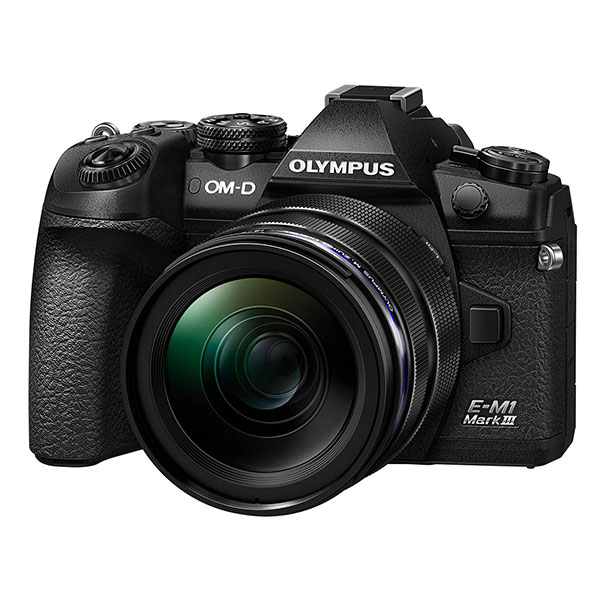 | Olympus OM-D E-M1 III Pros: compact, but ergonomic, an infinite number of possible adjustments, excellent quality of jpegs in the car, tropicalized, light, but not "plasticky" (on the contrary, it gives an excellent feeling of solidity), fantastic stabilization, dual SD slots, USB-C charging Cons: Menus a bit cumbersome and not very intuitive, but, if you find it, there is everything you need Opinion: Purchased two years ago with the unmissable offer "E-M1 III + 17mm f/1.2 pro for €1,600" (practically at the list price of the camera body alone you also took home one of the best PRO lenses in the Olympus/OM-System list!). The leap from the E-M1 I was remarkable: at the price of slightly larger dimensions (but which perhaps even improved the ergonomics, at least for me who have quite large hands), the two cars definitely do two different sports. I'm not saying that you can't take great photos even with the "old lady" (I made prints of 1m on the side and they are perfect even looking at them from 10cm away: so much for 16Mpx!), but I can say without fear of contradiction that in terms of quality and operating speed, the E-M1 III asphalts the old lady mercilessly. I switched to the m4/3 from FF Canon (which I still have, but honestly I don't use anymore, the portability of the Olympus system is too convenient), but I have to say that I don't regret anything. Over the years I have built a very complete kit (from the 8mm f/1.8 pro to the 300mm f/1.4 pro) and all the lenses go great with this camera body. It allows a lot of customizations, the quality of the files, at least for my uses, is excellent, the ISO tightness certainly not at the level of the top FF, but I shot safely at 3200 ISO without even having to apply PP denoise (look for photos of geckos in my galleries), the AF is very good, including face recognition. Maybe the tracking is a bit lacking (even if I've never adjusted it very well, for the genres I do, I don't use it much). All in all, a very good and professional machine, with an excellent quality/price ratio. Rated 9.5! sent on December 21, 2023 |
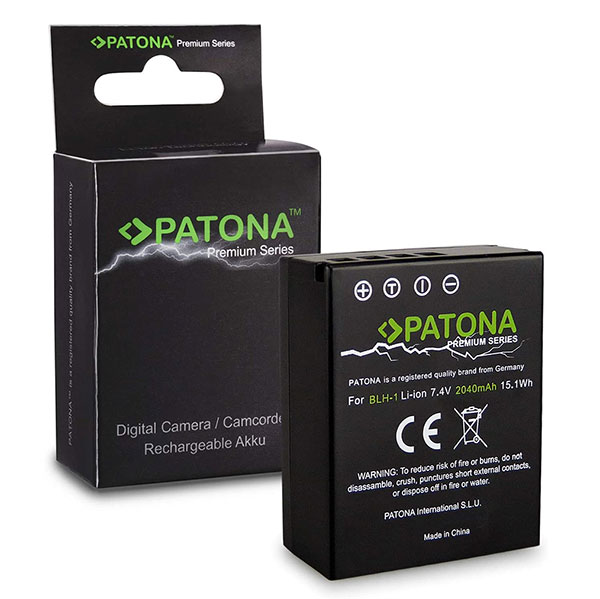 | Patona Premium BLH-1 Pros: It costs half of the original, almost equal autonomy, recognized by the system without errors or defects (E-M1 III), shows the remaining % of charge, is charged both by the charger and with charging via USB-C in the car Cons: As mentioned, slightly shorter duration than the original; I don't know about the long-term duration (I've had it for less than a year) Opinion: What can I say: it is a battery, not a camera, so the characteristics to be evaluated are not many. Basically I have already reported them above in "pros and cons". Identical to the original in size, it has a similar duration (slightly less), it is perfectly recognized by the machine, it can also be charged directly in the car with USC-C (I practically no longer use the charger, having basically never needed to charge more than one battery at a time). Maybe I would not take it as the only replacement for the original, but as a spare battery and / or to keep in the battery grip (as I often do), I think it may be worth it. sent on December 02, 2022 |
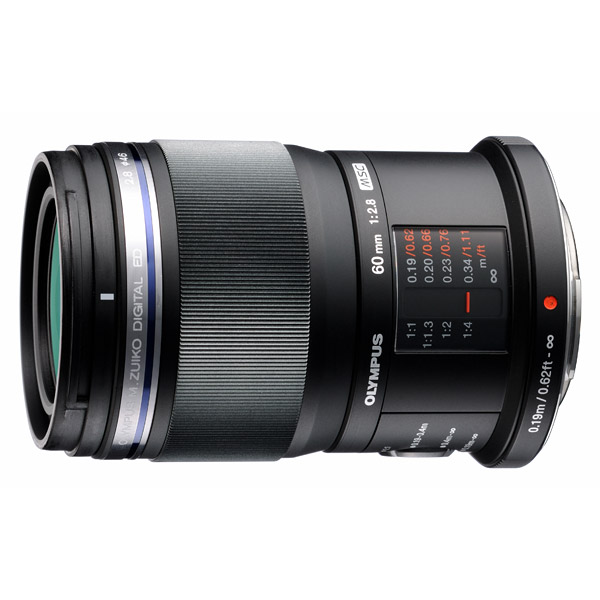 | Olympus M.Zuiko Digital ED 60mm f/2.8 Macro Pros: Image quality, RI 1:1 (2:1 considering crop factor), splash resistant (but not tropicalized), lightweight, compatible with focus stacking in camera (Olympus), used value retention Cons: a bit plastic, hood not included, lever to change the focus distances comfortable as a concept, but uncomfortable as an operation Opinion: For what it costs, great lens, compact, lightweight, but really excellent quality. The AF is not phenomenal as speed, but it is quite precise (in macro many do not use it, but the beauty of doing macro with m4/3 is precisely the possibility of being able to do it more easily freehand and in that case the AF is very convenient!). New do not give it to you, but it must be said that it holds very well the value in used (new is between 450 and 550 €, used to find it for less than 350 € is complicated). Other "cons" besides those written above do not come to mind! Waiting for the new macro Pro, this lens is an excellent replacement, which did not make me regret the excellent Canon 100mm f/2.8 (normal, not L) on FF. For what it is, rating 9 sent on November 18, 2022 |
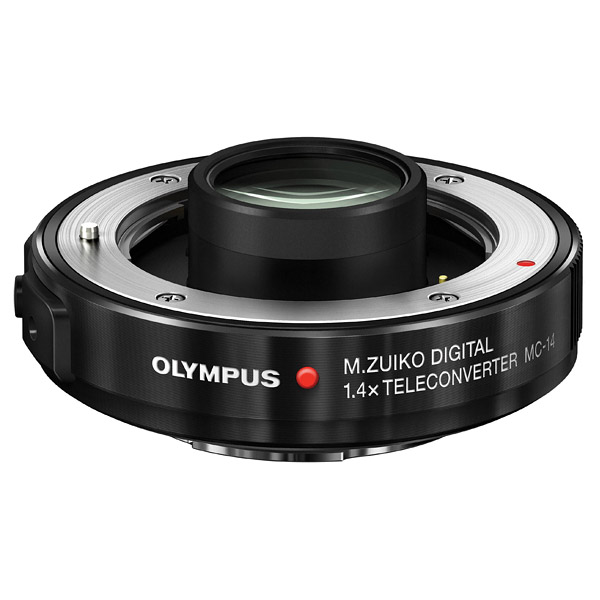 | Olympus 1.4x MC-14 Pros: Optical quality, compactness, lightness, tropicalization Cons: compatible with few optics (but this is more a "cons" of the optics rather than the multiplier!); qualitatively, none Opinion: I copied even pros and cons of my own review of the MC-20 2x as I consider them absolutely overlapping from that point of view. What else to add to that opinion: if possible, this MC-14 is even better than the "big brother"! The drop in quality and AF, which on the 2x are extremely contained, here are substantially non-existent! Mounted on the 40-150mm f/2.8 you get a 56-210mm f/4 (112-420mm eq.) that differs from the "smooth" lens only for the focal length. Zero slowdown, zero drop in quality. Same thing with the 300mm f/4 pro: if the 2x works very well, this 1.4x is just perfect. I add: it is TINY, only 2cm thick. It was often sold in kits with the 40-150mm f / 2.8 (if I understand correctly they were designed specifically to work together, from this derives this "perfect marriage", although even with the 300mm it is perfect in turn), so it happens to find them for sale together. What can I say: if you want to lengthen the focal length, it is a precious ally! Vote 10! sent on November 18, 2022 |
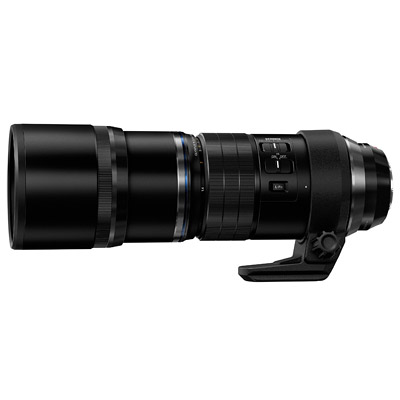 | Olympus M.Zuiko Digital 300mm f/4 IS Pro Pros: Crazy quality (even at TA), tropicalized, colors, AF, programmable function key, bracket included in the price Cons: big and heavy to be an M4/3 (it's exactly as big as a 300mm f/4 from FF), really fragile hood closure system Opinion: What can I say? It is definitely not an "easy" lens, which serves in every kit, but, in its category, it does crazy things. Coupled with "generous" camera bodies (E-M1X or E-M1 with battery grip) in terms of ergonomics it seems to have a flagship FF with 600mm of focal length, but .... less than half the size! Beautiful colors (like the other Olympus PRO lenses, on the other hand), lightning-fast AF (on performing bodies, of course), robust, solid, tropicalized, with a minimum distance of MAF that makes it practically a macro (0.34x reproduction ratio, which with the crop factor of the m4 / 3 become 0.65x: practically for "large" subjects such as butterflies, dragonflies, grasshoppers, reptiles, it replaces a macro lens without regrets!). What can I say: in terms of performance it is really a perfect lens. We come to the few cons: the dimensions are not small to be an m4/3 lens (as mentioned, it is exactly as large as a 300mm f / 4 from FF), but they are not such as to strain excessively (I am quite robust, but I tried to do several km with backpack and E-M1 III + BG + 300mm around the neck and I had no problems). It may seem like a fool, but the worst flaw of this lens is.... the hood! The closing method is really morons (three plastic teeth miiiiinuuuuscooooliiiiii, which are peeled only to look at them badly): but I say, you have at home the system of the hood of the 40-150mm f / 2.8 (a brainy thread if you do not know it, but then very comfortable and above all very stable): but you can not make one the same?! Apart from that, an amazing lens at a human price (in this era of 24-70mm at 2500€) sent on November 15, 2022 |
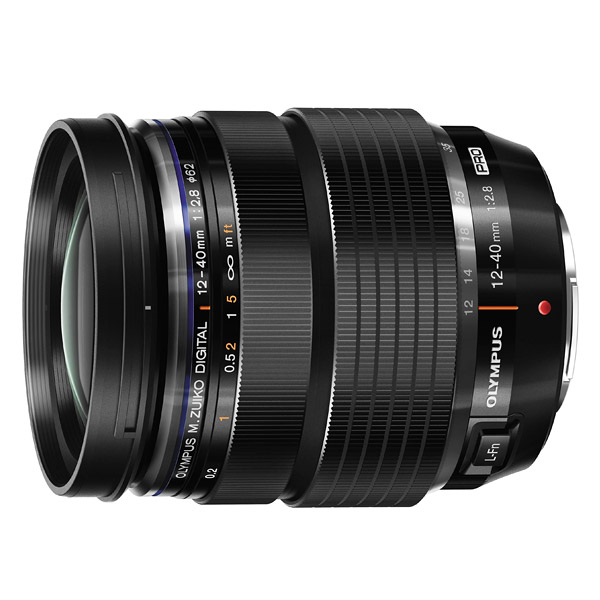 | Olympus M.Zuiko Digital ED 12-40mm f/2.8 PRO Pros: optical quality, construction quality, colors, tropicalization, compactness (compared to the equivalent focal length of other formats), hood included in the price and easy to use, versatility, convenience of the "clutch" control to switch from AF to MF, programmable function button on the barrel Cons: not having it? Opinion: In my opinion, one of the indispensable lenses in an m4/3 kit, together with the 40-150mm f/2.8 pro (unless you look for hyper compactness and move on the f/4 counterparts). The splendid optics in this system are dozens and dozens, mostly excellent, but if you had to choose only two, I would say precisely 12-40mm f/2.8 pro and 40-150mm f/2.8 pro, without hesitation. Solid, ergonomically perfect (especially on E-M1 bodies), quick AF, comfortable AF/MF switching, programmable function key. To all this is obviously added an excellent optical quality, already at TA (to be so picky, at f / 2.8 it could be even better; to say, the 40-150 at f / 2.8 is even better), very natural and pleasant colors (and also "aligned" with the other PRO optics, which all have a similar color rendering). Considering the excellent stabilization of the Olympus / OM-System sensors, I do not consider the lack of stabilizer a defect (on longer lenses like the 12-100mm f/4 pro it may make sense to allow double stabilization useful at longer focal lengths, but on a 24-70mm eq. it seems much more useful to privilege other aspects). What can I say: I recommend it 100% sent on November 15, 2022 |
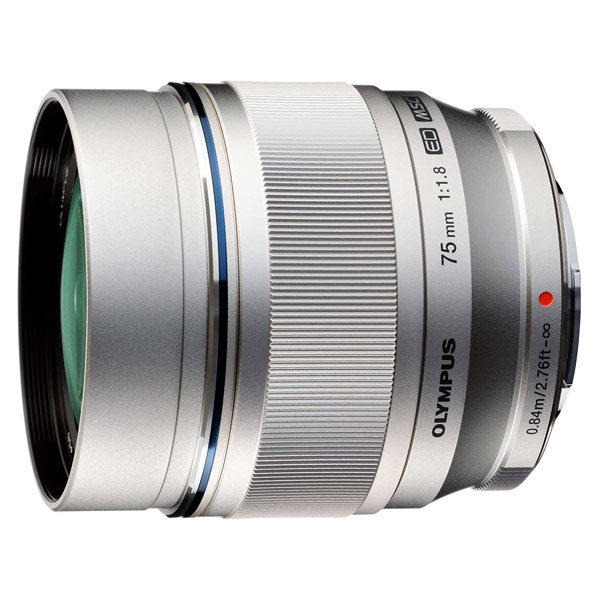 | Olympus M.Zuiko Digital ED 75mm f/1.8 Pros: sharpness, bokeh, compactness (to be the focal length that is!), TA rendering, colors Cons: not tropicalized (but still looks very solid), hood not included, weight to be a fixed m4/3 (but the good glass weighs!), a bit expensive (no offers) Opinion: I have this perspective recently (galeotta was a super offer on a "new exhibition" + € 200 cashback for the Olympus promotion, or rather OM-System). The quality of this lens really amazed me: it does not perhaps reach the peaks of the "pro f / 1.2" (and in any case there is no 75mm f / 1.2 PRO - understood OM-System ....? - , so we talk about comparing apples with pears), but the quality is excellent, already at TA it is practically perfect. His death are the close ups, in which he allows you to keep a certain distance from the subject (it gains the naturalness of the photo). In the "cons" I wrote the weight, not because it actually has prohibitive weights and dimensions (we are talking about 300g and about 6x6cm), but because taking it in hand together with the other Oly f/1.8 lenses (like the 45mm f/1.8, to say) it seems like just another series, it weighs almost triple! Of course, it pays off with even better quality and a nice feeling of solidity, as well as having better ergonomics on pro bodies (E-M1 III). If you are looking for such a focal length (I think of the admirers of the 135mm on FF), it is definitely worth the expense! Advised! sent on July 01, 2022 |
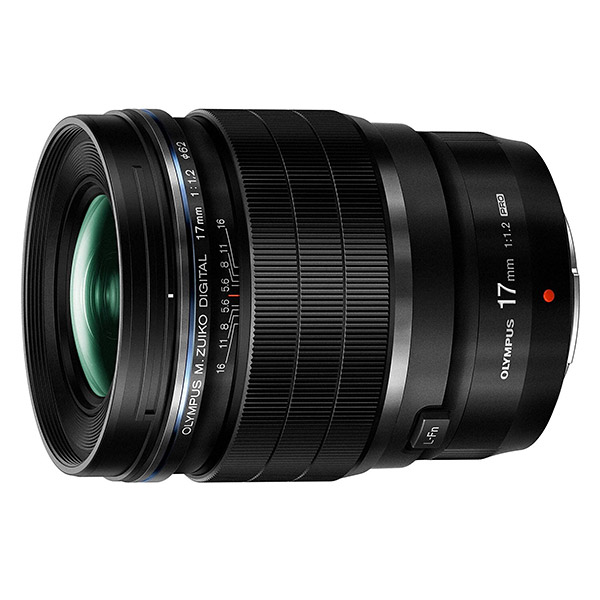 | Olympus M.Zuiko ED 17mm f/1.2 Pro Pros: Optical quality, brightness, AF, tropicalization, function key, hood Cons: to look for a hair in the egg of little meaning, it is not very compact for the average size of the m4/3 lenses (but it is still an f / 1.2, let's not forget it!) Opinion: Galeotta was the Olympus offer "E-M1 III + 17mm f/1.2 pro new at 1.600€"! I was considering buying an E-M1 II as an upgrade of my E-M1 I, but, given the figures at which it was (around 6-700 €), I said to myself: "well, even without looking at the price list (where the sum would have been 3000 €), with this offer it would be practically like taking a NEW E-M1 III at 7-800 €, together with a lens that I can sell new for 8-900€". To which I said to myself "come on, let's do it". The problem came when the 17mm f/1.2 pro arrived. Maybe it would have been better to sell it directly without trying it, because once you tried it.... I kept it! Really great lens, perfect size for E-M1 bodies (it is as big as the 12-40mm f/2.8 pro and they also share the same 62mm filters, like the other fixed pro 25mm f/1.2 and 45mm f/1.2), splendid TA rendering, very fast and precise autofocus (on E-M1 III, at least). Really, I can't find a fault with it! Rating 10, I highly recommend the purchase to those looking for a 35mm eq. of professional quality! sent on June 15, 2022 |
 | Nikon 35mm f/1.4 Ai-S Pros: Brightness, quality, colors, blurred, solidity, materials, compactness Cons: "pure" sharpness to TA (not that it is unusable as they say, simply a "veiled" thread; from f/2 it is excellent) Opinion: Premise that will sound like a blasphemy to the "purists": I use this lens - obviously with an adapter - on a Canon 5D II. I was looking for a quality 35mm f/1.4 at a good price, I found a deal for this lens and, having ascertained that I could use it with an adapter, I took it. I must say that I did not regret it at all, now I use it for all those indoor portraits for which my Zeiss Planar 50mm f/1.4 and 85mm f/1.4 are too long. The focus is soft and precise (as can be expected from a perspective of this level, albeit dated), the dimensions are contained and the feeling of solidity is excellent. The yield to TA, which others have called "nebulous / veiled" is not as intrusive as you might think: of course, at f / 1.4 maybe I would not take pictures of panoramas, in which you look for hyper sharpness. But, apart from the fact that, even for those uses, already from f / 2 completely changes "face", becoming extremely sharp (the top I would say at f / 5.6), for what I use it, or full-length portraits indoors, even at f / 1.4 you do not get bad results at all. In those circumstances the famous "veiling" is barely perceptible, as far as I can see. And in any case, I repeat, just close at f/2 to make it vanish. What can I say: as a lover of "no brand" photography, I am very satisfied with this goal! sent on September 20, 2021 |
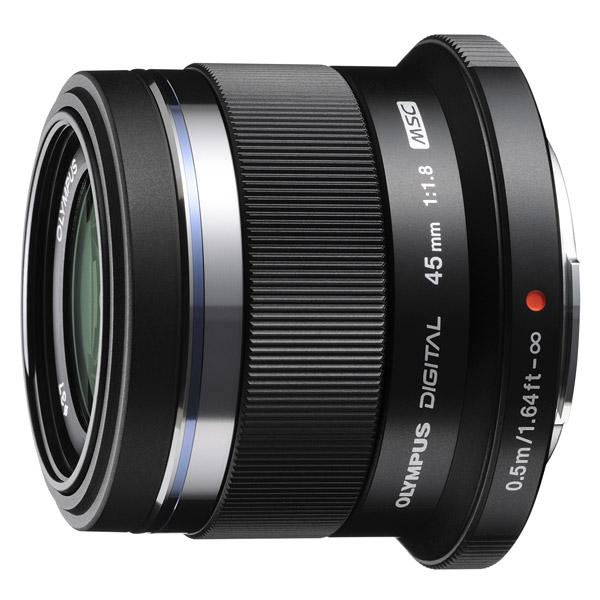 | Olympus M.Zuiko Digital 45mm f/1.8 Pros: Very light and extremely compact (in pure style m4/3), bright, good AF, very low price (especially in used) Cons: Non-exceptional colors (they remain a thread colder and less natural than the PRO series such as 12-40 or 40-150), blurred a "nervous" thread, but still good for close-up portraits Opinion: What to say, a lens that well represents the philosophy m4/3 (lightness, but good quality). I have a double kit, FF + bright fixes (which I use for portraits) and m4/3 with ZOOM PRO 12-40 and 40-150 (which I use for travel, hiking, nature, sports). Since, if space allows, with 40-150mm f/2.8 pro at 150mm come excellent portraits, with an excellent blurry, I wanted something more "compact", to take me with me on occasions when the FF could not find space. Read some reviews and "discarded" the fixed Olympus PRO series (spectacular lenses, but too expensive for use that I would have made), found a great offer on a guaranteed used in a store, I convinced myself to buy this little guy. What to say: net of a few weeds, I would say that the value for money is certainly in his favor. The images are also sharp at TA, especially for close-ups/half busts (the genre I do the most), and if you can properly space the subject from the background, the blurry is also absolutely pleasant. For full-length portraits, the typical Pdc of the format comes out and the blurry loses a little (to say, with the same equivalent focal length my comparison term is my Zeiss Planar 85mm f/1.4, which provides a much better blurry, as well as my other portrait favorite lens, the Zeiss Planar 50mm f/1.4), but I would say it is more an intrinsic feature than a defect. For portraits set indoors in full length (for which I use 35mm f/1.4 on FF), it is a bit too long, but the equivalent focal point on m4/3 (17mm f/1.8), while excellent, has far too little blurry and at that point I prefer to use the 12-40. The colors are not bad, but they are slightly desaturated and less natural than the PRO series lenses. In any case, with a couple of clicks in PP everything is solved (and then I often convert portraits to BN, so it's not a problem). What to say: do not expect a Zeiss from 2000€ (it would be stupid, I would say!), but for just over 1€ per gram on the used market (116g, it is located on 140-150€), it is an excellent lens to always have behind it, which, with a few precautions, can provide excellent results. Vote 9 sent on June 16, 2021 |
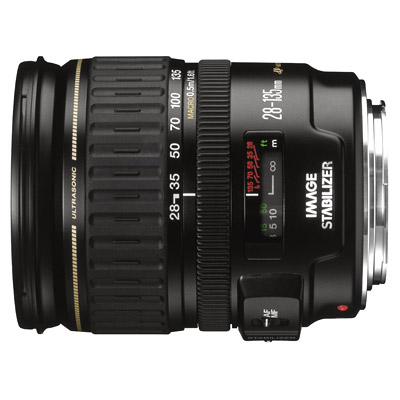 | Canon EF 28-135mm f/3.5-5.6 IS USM Pros: covered focal points, cheap, stabilized, light, versatile Cons: "plastic", not exceptional sharpness Opinion: I have had this lens since 2006, from my first Canon 30D (on which it was actually little wide-angle, but I survived). He accompanied me to discover photography and even now (on 5D II), although not very often, it comes in handy. The sharpness at TA is not great, but closing a little improves, but above all, as always, depends what you have to do: for small prints or situations from immediate jpeg, the results will definitely not be to be despised, with good colors and sharpness more than enough. Stabilization is not as phenomenal as the most modern, but for the years it has, it does its job well. Little bulky and light (although, as mentioned, a bit "plastic"), it is a very good and really economical lens to start to become familiar with the various focals and then eventually evolve towards something of higher quality. Distortion present, but not exaggerated (less than that of more recent targets). What to say: it will not be a super top ever, but for the figures it is around, it maintains in my opinion a rather interesting value for money and for example associated with an old FF (5D I or II) can allow with very little expense to start to experience. sent on September 17, 2020 |
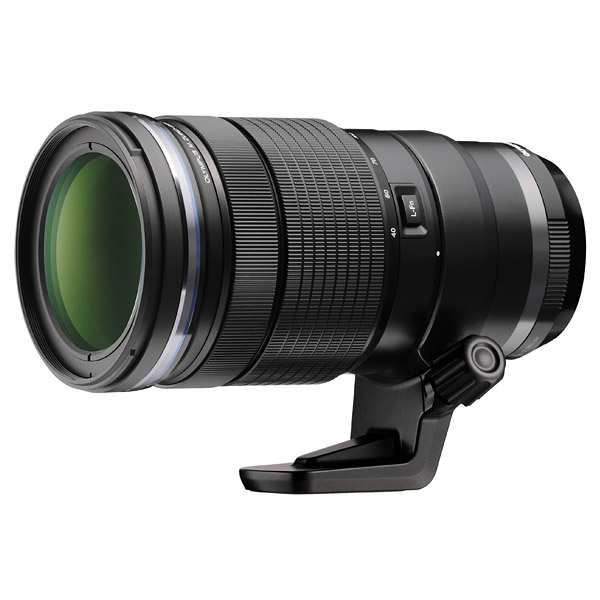 | Olympus M.Zuiko ED 40-150mm f/2.8 Pro Pros: Image quality (also multiplied), compactness and weight (compared to FF lenses), brightness, tropicalization, does not extend and does not rotate as the focal length and focus changes, including easel bracket, built-in lampshade, pleasant blur, minimum distance of focus "almost macro" (and with 2x magnification doubles) Cons: compactness and weight (compared to m4/3 lenses), paraluces a delicate thread on the appearance Opinion: I've had it for a few months now and, although I also have FF kit, it's probably the best lens I've got. Excellent chromatic performance, sharpness and contrast excellent already to TA, associated with another shorter lens (12-40mm f/2.8 pro the top, but also a fixed of your choice) allows you to cover practically all the needs in a lot of occasions (sports, nature, animals, landscapes, even portraits, even wanting!), especially if you do not want to give up the quality, but you also need (or even just want!) compactness and lower weight compared to the larger formats. If you then associate it with the MC-20 2x (150g), you can really get to 600mm equivalent f/5.6 (as a field angle) with only 0.9kg, keeping virtually unchanged the image quality and speed of the AF! Your back thanks! The only "limit" referring to the only world m4/3 (where it still remains a unique lens) is the size, yes compact compared to FF lenses, but not lowercase in general (to say, the 35-100mm f/2.8 is practically half, although of course it does not reach 150mm). If you know this aspect and you don't care, it's a lens that can't be missing in a m4/3 set sent on September 11, 2020 |
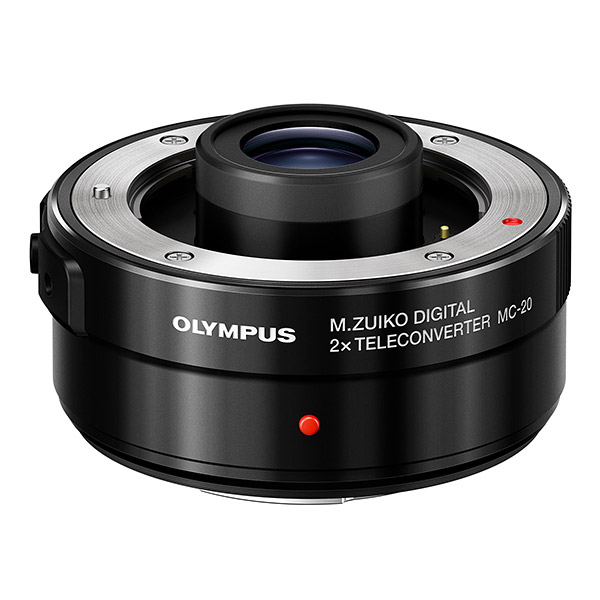 | Olympus 2x MC-20 Pros: Optical quality, compactness, lightness, tropicalization Cons: compatible with a few optics (but this is more a "against" of optics rather than the multiplier!); qualitatively, none Opinion: In the past I have used other multipliers (Kenko on FF Canon and still I sometimes use the 1.4x plus 100mm f/2.8 macro on 5D II), but the quality of this little one has left me speechless: associated with the Olympus 40-150mm f/2.8 PRO is really amazing, if you do not look at the exifs, it is practically impossible to understand by the image quality alone if the photo was taken with or without multiplier (and those who know the 40-150 know well what exceptional optical quality you are talking about). What to say: with one and a half years allows you to have a canvas twice as long without loss of optical quality! OBVIOUSLY, doubling the focus, halves the brightness (f/5.6 fixed), but this is physical, not a demerit of any lens. If you really want to frame the subject in the extreme corner of the frame (but who wants to do it?!), it could be useful to close half a stop, but otherwise, even at TA the image quality remains absolute. I've never tried it with the 300mm f/4, but they tell me that the yield is absolutely similarly excellent as on the 40-150. At my own feeling, the AF (on E-M1 mark I, I imagine that on the next one goes even better) remains very responsive, maybe a hair hair slower, but it's hard to understand it. Rating 10 and absolutely recommended purchase for those who want to get to mm "serious" without fainting and/or get a hernia! sent on September 11, 2020 |
 | Zeiss Planar 85 f/1.4 (C/Y) Pros: Opening, sharpness (already good at TA, exceptional closing a little), colors, three-dimensionality, MAF precision (albeit manual), feeling of solidity, anti-reflective treatment Zeiss T Cons: weight (but good glass and metal weigh!), original expensive lampshade, closing the overflow diaphragm (but here I would say it's more of a fault of the cameras than the lens!), difficulty focusing from eye with reflex, minimum distance of MAF a little high, not having it Opinion: After a long and patient search to find "the deal", purchased used (of course, it's a lens of the 70s!) with C/Y attack: perfect, but had the diaframmi diaframmi a hardened thread, but with a visit from my trusted photo-repairer and 30th of spending came back as it came out of the factory. I use it with a chip-free adapter (16th on Amazon) on the Canon 5D mark II (no compatibility issues; with the Zeiss Planar 50mm f/1.4 I had to trim a millimeter of the internal diaphragms stick, which skimmed the plastic near the contacts). What to say: from the very first shots, he paid off my expectations in full. The detachment of the planes is exceptional, the progression of the blurry (beautiful) is soft and delicate. At TA is really a "magical" lens for portraits and still life, literally "detach" the subject from the background. Shooting in live view, I've never had any problem focusing on individual eyelashes (I guess with mirrorless scope magnification is even easier); obviously the speed of execution is lower than a lens with AF, but you know it when you buy it. Also exceptional for landscape, where closing the diaphragm (usually in this area I use it at f/5.6-F/8, except for particular "excursions" to more closed diaphragms for matters of depth of field), you can take advantage of its fantastic chromatic rendering (I made sunsets and "blue hours" FANTASTIC) and the exceptional sharpness (with Canon 5D II, at 200m easily accounts the bricks of a wall, enlarging the image to 100%. The impression is that it can comfortably solve even much denser sensors, but I have never tried). It's weigh-in (the difference with the 50mm f/1.4 is perceptible, holding the machine around your neck), but nothing shocking, you can safely bear it. Is the purchase worth it? If you know what you buy, yes, 100%. 9.5 and not 10 just for the slightly "uncomfortable" and expensive lampshade. sent on June 25, 2020 |
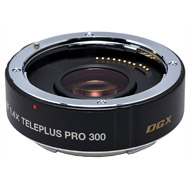 | Kenko Pro 300 DGX 1.4x Pros: Compatibility with EVERY lens (even those not compatible with the original extenders), image quality, construction solidity, low cost and great value for money Cons: Some slowdown in autofocus (but nothing), pairing with heavy lenses could strain and cause some minimal play Opinion: I own both this and the 2x (which I actually bought "for a snful" but I hardly ever use). Most of the time I use it coupled with the Canon 100mm f/2.8 macro: you lose a stop (it becomes a 140mm f/4 equivalent), but the autofocus slows down little and especially the image quality is practically indistinguishable from the "smooth" optics (at least on the sensor of my Canon 5D mark II, I imagine that on denser sensors and/or with less solvent optics can be noticed more), without sharpening or particular chromatic aberrations. Very useful with "timid" subjects, which you can not get too close to and/or if you want to go beyond 1:1 magnification in macros without loss of quality. I remember that, like all focal multipliers, this also multiplies the defects of the lens, so I recommend using it only with quality optics. Purchase definitely recommended, also for good hold in the used (you buy and sell easily around the hundred euros). sent on April 26, 2020 |
 | Zeiss Planar T* 50mm f/1.4 (C/Y) Pros: Bokeh, sharpness (very good already at TA, excellent from f/2 up), color yield, compact size, excellent construction, quality materials (glass and metal only), flare resistance, focus on infinity exactly at the bottom of the dial, 55mm filters Cons: completely manual (but those who buy it know well), paint of the barrel that spoils easily, depending on the machine and the diaphragm, can tend to over/under expose slightly (/- 1/3-2/3 stop) Opinion: I start from the only "cons", in my own respect decidedly marginal: - the paint of the barrel that is easily worn (to say, I also have the Zeiss Sonnar 135mm f/2.8 and Sonnar 200mm f/2.8 and both are much better in this respect); - it's a completely manual optics, so forget the shots "on the fly": it takes a few moments to compose and focus (especially at TA: at f/1.4 the depth of field is really small and the focus takes a bit of attention and time); - sometimes tends to over/under expose slightly (/- 1/3-2/3 stop): just know it or at the limit easily correct it in PP. After this, my judgment on this view is totally positive: - despite being f/1.4, already at TA has a high sharpness, which becomes very high from f/2 up; - the bokeh it generates is beautiful, soft, with a very gradual transition between focus and blurring, which gives three-dimensionality and "magic" to the portraits; - the chromatic rendering is excellent, very natural (great for landscape photos, along with extreme sharpness at f/4 or f/5.6); - compact, but pleasantly "massive", solid: it is made only of glass and metal and you see; - the treatment gives it an excellent resistance to the flare (be careful that it is in good condition, when you buy it); - focus on infinity exactly at the bottom of the dial (feature that shares with all the other Zeiss in my possession), great for star photos; - diameter filters from 55mm, which results in the ability to buy excellent filters without fainting (shared diameter with the 28mm f/2.8 and the 135mm f/2.8, with which you can then "swap" the filters). I have never tried the modern counterparts of the Zeiss house (they tell me they are even better), but I can assure you that even this "old" is an excellent purchase, even on the demanding sensors of modern machines. sent on March 17, 2020 |
 | Zenit Helios 44M-6 58mm f/2.0 Pros: Compactness, feeling of solidity, sharpness already at TA (to be such an old lens!), MAF precision (to be a full manual!) Cons: Flare resistance equal to ZERO (but you can overcome it with a lampshade or even "use" the effects and veils that flares create), exposure that changes quite a lot as the diaphragm changes Opinion: Having an old APS-C Canon (30D) at the moment, this lens, which already has a "strange" focal length (58mm), becomes equivalent to an unusual 92mm. Bought for game at ridiculous price to try a fixed a little bright (f/2.0), I must say that it was a nice surprise, despite all the obvious limitations of a lens of those years (attack m42 with adapter with chip, so marks 50mm f/1.4 always, without "real" EXIF data). It looks like a compact size lens, with a weight definitely not excessive, but that shows what dough is made (glass and metal and that's it). Having an unusual focal length, it takes a moment of setting to compose the images well, but once you take your hand, there is no problem. Having a machine without live view/focus peaking nor broken slide or the like, I was rather hesitant about manual focus at TA (also because taking a bright lens and using it to f/8 does not make much sense, in my opinion!), but for the small expense incurred, I decided to try. Well, I definitely wouldn't use it (at TA) to take pictures of kids playing or a basketball game, but I have to say that for portraits (for now only canines, but I suppose it's the same with the human ones), I had no difficulty in catching the correct fire, both with so much light and with passing clouds (here you can see test photos taken in the first test outing https://www.juzaphoto.com/me.php?pg=282001&l=it ). By the way, as written in the PRO, already at TA has an absolutely good sharpness (in portraits, in the panoramas loses enough), which obviously improves further closing to f/5.6-8. Obviously it doesn't get to the levels of modern lenses, but honestly on old sensors like my 30D I don't think you notice much the difference. Good bokeh, although I didn't get to try it at its best (in the couple of shots made to my dog, the background was quite close to the subject, so it's so blurry, but you appreciate little the effect you can definitely get). Coming against: even with a minimum of shaving light, it is practically unusable, a lampshade is absolutely necessary (unless you like the "veiling" effects). Other thing, I do not know if "guilty" only of my machine body or even of the lens, the display meter tends to overexpose, but not in a constant way, but more and more as you close the diaphragm (to say, if at f/2.0 just compensate 1/3-2/3 stop, at f/5.6 you have to go also to 1.5). As usual, you just need to know, but you definitely lose a little immediacy. I rated 9 obviously referring to what, because apart from the "detail" of the flare satisfied me in full! sent on November 15, 2019 |
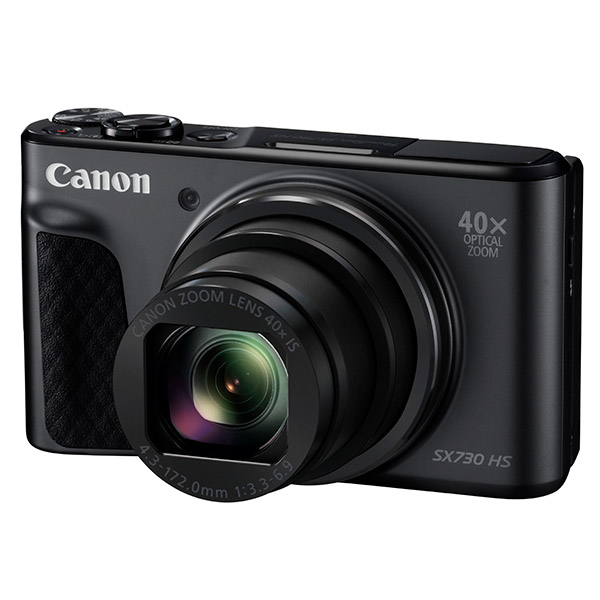 | Canon PowerShot SX730 HS Pros: Zoom versatility (24-960mm equivalent), value for money, stabilizer, colors, video quality, battery life, size, tiltable screen, wifi, minimum macro focus distance (though only .24mm) Cons: ISO hold, maximum diaphragm closure (comes to f/8), audio in videos, no RAW (snaps only in jpeg) Opinion: Taken used as a light travel all-rounder to replace the SX220HS, which unfortunately passed to better life following a fall. I would say that it does not make you regret, outclassing it in all aspects and with only minimally small dimensions. Excellent ergonomics, great lightness, simple and intuitive menus, excellent image quality (obviously considering the size of the sensor, not comparing it to APS-C or FF). To have something better than the mobile to shoot on the go (and especially with 40x zoom!) is definitely a great choice. It would be nice if you kept the highISOs a little better (already above 400 the noise is perceived and shooting only in jpeg you can do little in PP), but given the size and density of the sensor, miracles can not be done. Very convenient wifi, which with the special app on the smartphone allows you to control the camera remotely (as well as having a much larger screen on which to watch the results of the shot). Finally, the tiltable screen is very useful for those shots in strange positions (insects macros on the ground, for example). Surely it does not have the optical and sensor qualities of a reflex: but in 90% of cases are they really so necessary? Definitely a recommended purchase. sent on October 16, 2019 |
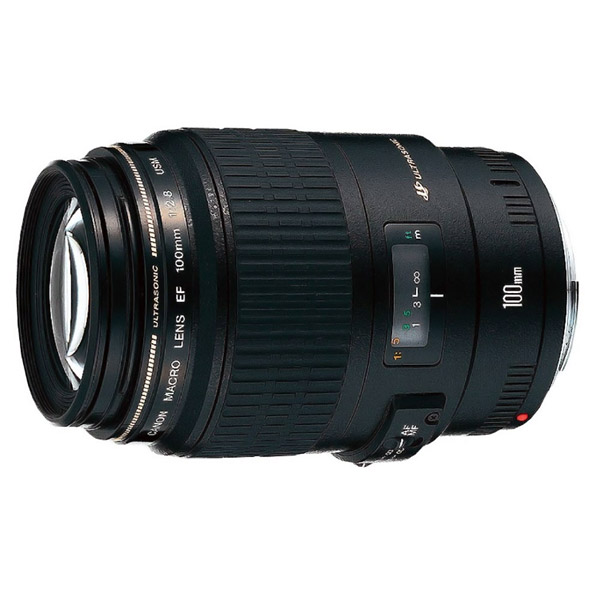 | Canon EF 100mm f/2.8 Macro USM Pros: sharpness, color rendering, internal focus, construction, lightness Cons: lack IS (but you know when you buy it), bulky lampshade Opinion: Bought used after my friend who had lent me another specimen asked me back his. I use it mainly on APS-C (I am considering the purchase of FF, in which case I would also use it on that, tried on a friend's machine body, fantastic results), for macro photos to insects. For my kind of macro, I rarely use the easel (let's say I do "macro itinerant hunting) maybe IS would have been comfortable, but often the move is given by the movements of the subject or wind more than my hand, so it's fine so (not to mention that, as someone has already written, the IS compensates for the up/down/left/right, but not the forward/back that so many problems of focusing gives to macro photos). The quality of the lens is great, the AF is not a lightning bolt (but I think it's more to blame than anything of my old 30D with which I use it), but it quietly does its job. This weekend I also used it for photos during an athletics competition (cloudy weather, so little light, and with the 30D to raise a lot the isos is not talked about) and it did not disappoint at all, indeed. In short, I am fully satisfied with it and I recommend it to everyone! ----AGGIORNAMENTO---- Bought my first FF (Canon 5D mark II, dated, but still excellent for my use) and the lens is spectacular, it gives really good results. Quality essentially indistinguishable even with the 1.4x multiplier (I in this case have the Kenko 300 PRO DGX), just with the 2x (always Kenko 300 PRO DGX) starts to lose something, but it still remains perfectly usable for web/social. sent on September 30, 2019 |
 | Manfrotto 486 Pros: small and light, but stable Cons: for now no one! Opinion: I bought this head by finding a super offer on the bay (29th), replacing the head arrived along with the purchased Rollei stand (which could be fine for a mobile phone or a compact, but with the reflex was decidedly unstable). Massive compared to the small size (albeit light, in absolute terms), you feel that the material of which it is built is valid. Once the lever is framed and narrowed, the frame remains practically still (it will not be at the level of embedial heads, but also like the "Chinese" heads that I had that, after tightening the clutch, completely bust the frame!). At the moment I tried both with small and light optics (18-55) and with even night lys (tamron 70-300VC), all on Canon Eos 30D. I hope in the holding of the locking mechanism (which for now is perfect, but I have not used it much), but otherwise, given the cost, it seems to me an excellent investment. UPDATE: Also tried with Canon 5D ii - Zeiss Sonnar 200mm f/2.8 (2,120g of total weight, not quite a fuselage), always on the aforementioned Rollei stand, for star photos (so long exposures) and held up perfectly. I therefore confirm the goodness of the purchase! sent on August 23, 2019 |
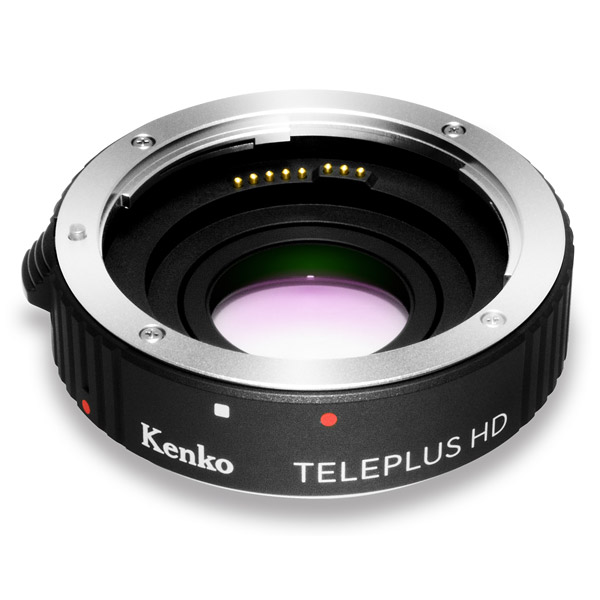 | Kenko Teleplus 1.4x HD DGX Pros: Good compatibility (so far it has worked with all my lenses, old and new, Canon and other brands), good quality, AF maintenance, value for money Cons: "Only" 1, 4x (but you know when you buy it!), good grafts, but not perfect (sometimes there is a little "game", especially with heavy lenses) Opinion: Bought used for little money, more than anything else to try it (I have no "series" lenses to multiply), I was pleasantly surprised. Tested on my old 30d with:-Canon 28-135mm f/3.5-5.6: Compatible, full read EXIF data, keeps AF on all points (with good reactivity); -Tamron 70-300mm F/4-5.6: Compatible, full read EXIF data, keeps AF on all points (better than the central), but slows down a lot and with little light often does not hook the subject (numerous "back and forth"); In manual instead it correctly maintains the focus confirmation. This lens at 300mm is already soft on its own, so it's definitely not the best possible choice to multiply, but that's it! -Seimar 500mm F/8 retroreflecting: M42 (screw) mount, with chip adapter; It maintains more or less unchanged its objectively a little poor quality; At the theoretical level keeps the confirmation of focus, but does not hook almost never (I guess because of poor sharpness or other); does not recognize the actual aperture, but "recognizes" the presence of the multiplier (with only the lens marks me "f/1.4", with also mounted the multiplier marks me "f/2.0"). Obviously here they are not made for each other, but they can coexist. -Zeiss 200mm f/2.8 Electric: M42 (screw) mount, with chip adapter; The quality does not drop in an appreciable way and it works very well the confirmation of focus (being a fully manual lens, of course there is no AF to maintain!); Here, this becomes a nice 280mm F/4! Also in this case, the machine recognizes the presence of the multiplier, also multiplying the minimum diaphragm detected. In Summary, for now this multiplier has adapted, maintaining substantially all the functionality, to all the "Accrocchi" that I tried to do. It doesn't turn a donkey into a thoroughbred, but let's say it's not the other way! Considering also the value for money, I gave a vote of 9. sent on January 24, 2019 |
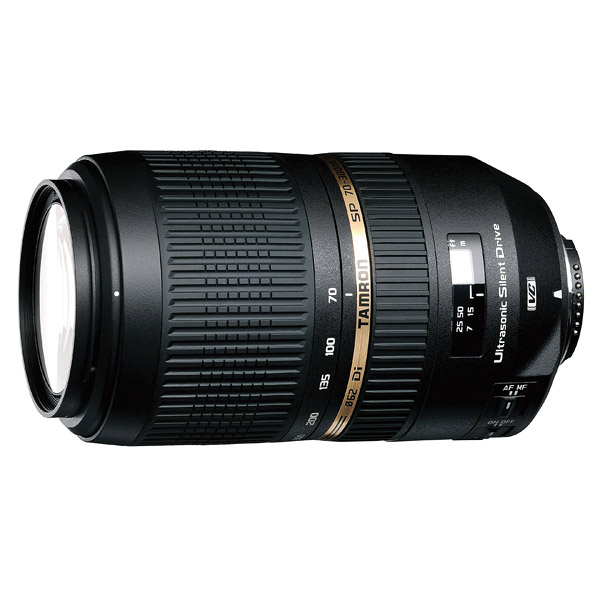 | Tamron SP 70-300mm f/4-5.6 Di VC USD Pros: Excellent value for money, sharpness (loses something just at 300mm, but at F/8-F/10 still good returns), versatility, excellent stabilizer Cons: Hard to use it with hood mounted on the contrary (it's a cons?!), autofocus a little slow (with moving subjects, especially if small, it takes luck!) Opinion: Purchased used in excellent condition at a very advantageous price as upgrade of the old Canon 100-300 USM (not is), compared to which is another planet. Images much sharper and contrastate, good brightness, excellent stabilizer (I have fairly firm hand, but I managed to shoot at 300mm to 1/30 without any blur, with the old Canon I dreamed of it!). Already good to TA, it improves further by closing a little the diaphragm (the best at F/10). AF slow with small subjects, even in light conditions not exaggeratedly critical I happened to "lose" a shot because it did not focus on time the subject in rapid passage (avifauna especially), but being an amateur, was not then this great problem ( With larger and/or slower subjects, no problem). Obvious that a Canon 100-400 II is further another planet, but compared to spending, I am fully satisfied with the purchase and I recommend it to everyone. For the price to which it is used, I think it is difficult to find better. Good Tamron! sent on January 02, 2019 |
 JuzaPhoto contains affiliate links from Amazon and Ebay and JuzaPhoto earn a commission in case of purchase through affiliate links.
JuzaPhoto contains affiliate links from Amazon and Ebay and JuzaPhoto earn a commission in case of purchase through affiliate links.May Beauty Be Everywhere Around Me